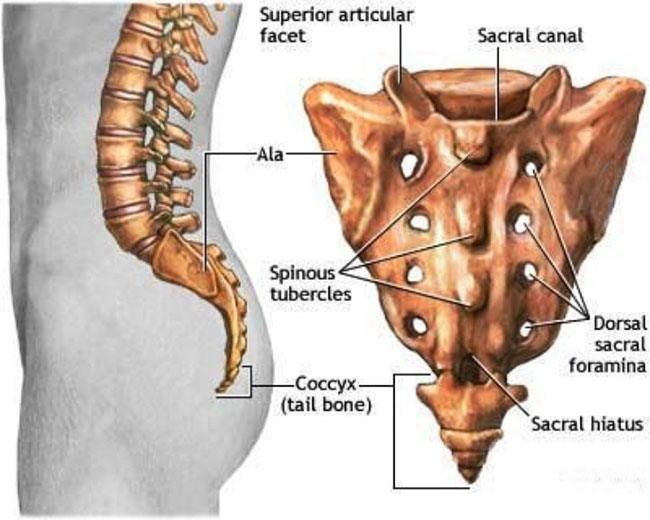Why do people not have tails but tail bones?
The story of the origin of the useless tail bones.
Although now useless, the human tailbone - often referred to as the tail bone - is still present at the bottom of the spine, a remnant of our tailed ancestors. Long before humans no longer had tails, our fish "relatives" had two tails: one with flesh, the other more flexible, like that. When the animals begin to land, the rear fin disappears, leaving only the fleshy tail.
A long time later, apes lost their tail. These primate no longer need tails to maintain balance or send signals in social interaction; they shift balance backwards and begin to communicate through gestures, facial expressions, and voice.
Other shore animals use their tails for functions such as moving, communicating, and chasing insects; while the fish still maintain their fins to move around in the water.
As for the human race, we only retain one tail bone - made up of several tail vertebrae , like those you can see in real tails - for no apparent reason. . The tailbone is neither beneficial nor harmful, it simply lies there, fixed at the end of the spine.
" It just lies there and doesn't do anything, " said Alexander Werth, a biologist at Hampden-Sydney University.
Scientists call the remnants of this evolution " vestiges " : the term comes from the Latin word "vestigium", meaning "footprints". The vestiges can range from anatomical structures such as bones and internal organs, to physiological phenomena such as goose bumps ; When our hairy ancestors get cold, their hair will erect to prevent the body's temperature from falling.

Coccyx, also known as the human tailbone (Coccyx).
Although scientists have not agreed on specific factors, the standard definition of the "trace" affirms that it has no function in the body.
Werth studied the interaction between traits left from both evolution and embryonic development; They are more connected than you think. When we were embryos, we used to have a tail for a few weeks. By the 8th week in the womb, most of them disappear.
However, it is not the gene that is responsible for the tail's disappearance. Lost structures can still appear in humans, because the gene is dynamic and can be "turned on" or "turned off" . Birth defects sometimes lead to the reappearance of ancient traits in a process called "re-breed" (or "reshaping", "backward evolution" ) - showing the genome of we have a complete record of all evolution so far.
The result of "resembling" is that some people are born with a tail. The incidence of this is extremely rare: doctors say there have been only about 40 to 59 cases throughout modern history, though the exact number is unknown. The vast majority of these cases subsequently underwent a tail removal surgery, including the famous pop singer Ke $ ha.
However, research on the human tail has not made any progress. In 1875, Darwin recorded in his book "The Descent of Man" that " in rare and unusual cases " people could " form a small external structure like a tail ". A few years later, Dr. Rudolf Virchow established a human tail classification system but did not get the attention.
We now know that the human tail is most likely a sign of defects in the spinal cord , because the skin and nervous system are very closely interconnected. Our sensory nerves release substances called neuropeptides into the skin, and they affect the physiological development process.
Here, a question arises: can a person keep the tail and still lead a healthy life?"As long as that tail doesn't affect their ability to survive and reproduce, it won't be a big deal," said Werth.
" I don't think having a tail is bad, " Werth added. " Who knows. If you're a circus artist balancing on the strings, it might help you keep that balance "!
- Everyone has this part of their body but don't know why they exist
- Discovered human beings once had two tails
- Why don't humans have tails?
- Detecting giant dinosaur tails dating back 72 million years
- Tail posture reveals the mood of the cat
- Japanese scientists built a tail for humans
- In awe, the rats suck up their tails when they search for food in order
- Why does a comet have many tails?
- The salamander has 8 tails
- Strange story: The young male survives the tail about 18cm long
- Why does salamander grow back almost completely but lizards do not?
- Dogs wagging their tails to express emotions
- It is difficult to explain who grows abnormal tails
 'Fine laughs' - Scary and painful torture in ancient times
'Fine laughs' - Scary and painful torture in ancient times The sequence of numbers 142857 of the Egyptian pyramids is known as the strangest number in the world - Why?
The sequence of numbers 142857 of the Egyptian pyramids is known as the strangest number in the world - Why? History of the iron
History of the iron What is alum?
What is alum?